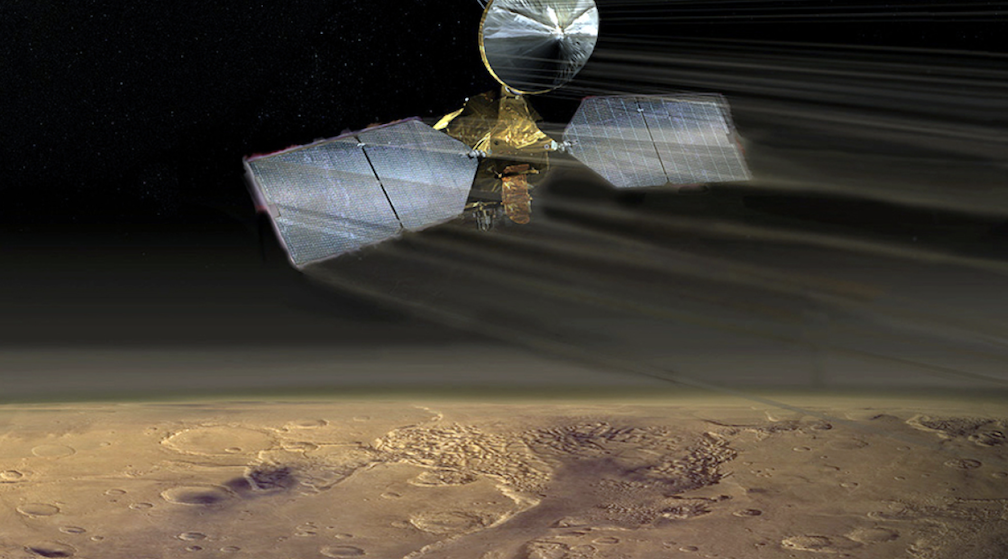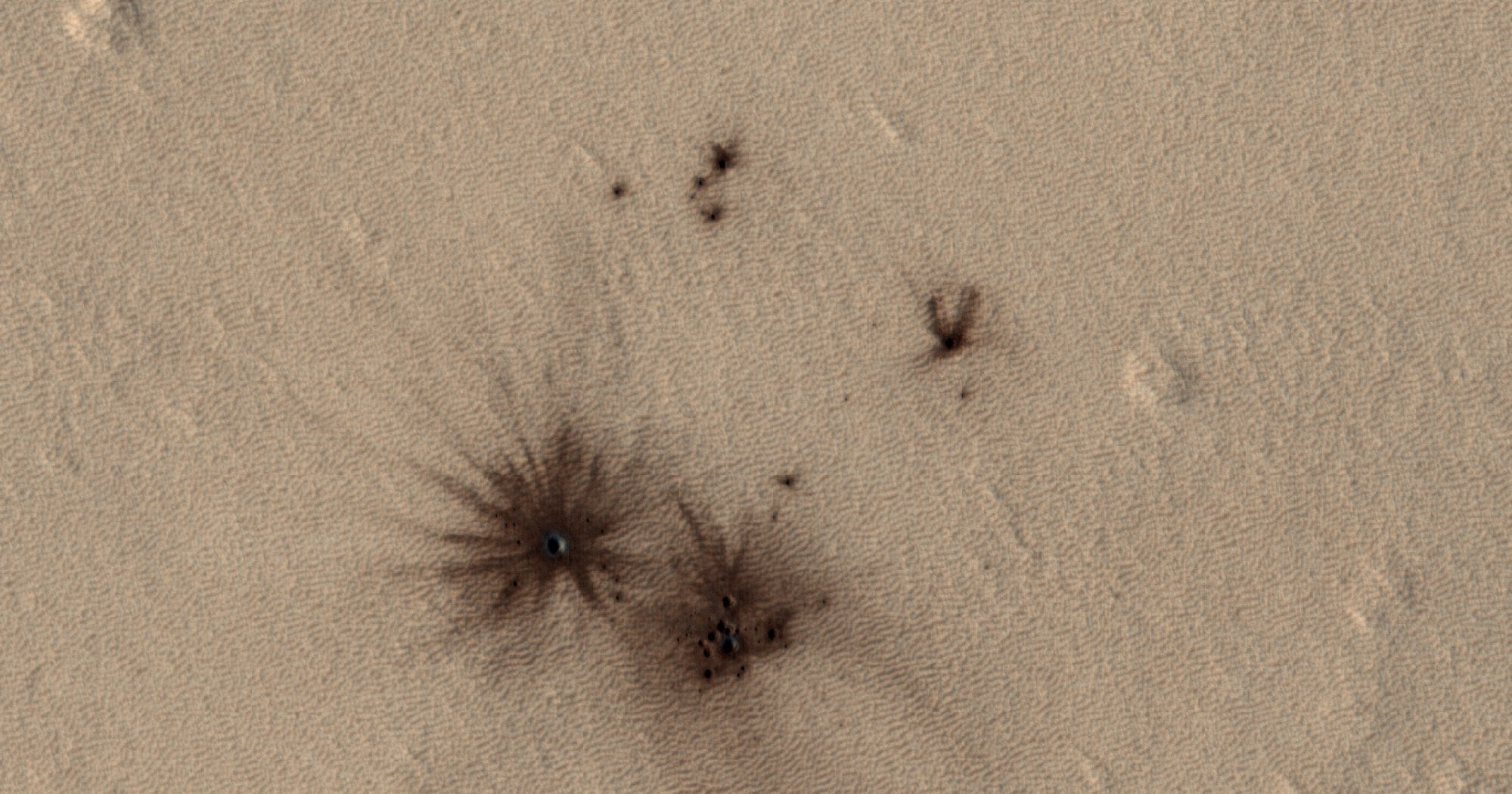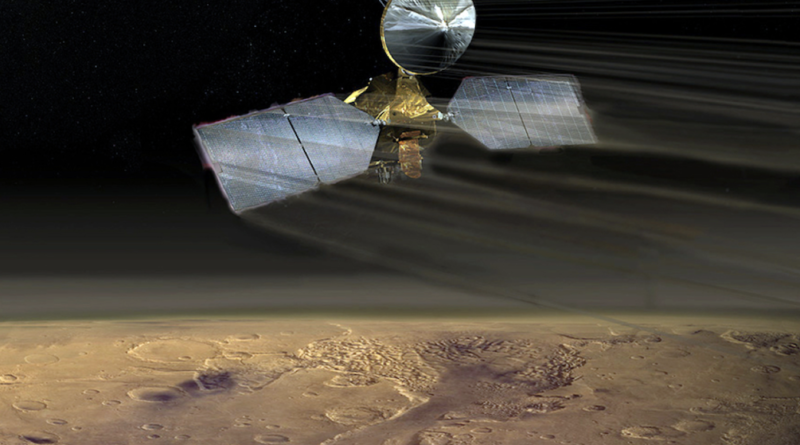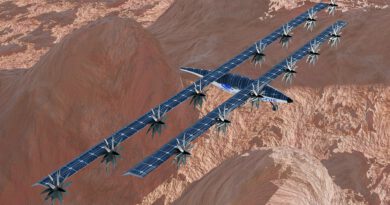NASA finds doomed asteroid that exploded in Mars atmosphere

Mars is a desolate, irradiated, lifeless, windswept land. But it’s also the site of dramatic activity, as space rocks pummel the Martian surface.
Asteroids or chunks of comets often scar Mars’ desert, in part because the Red Planet orbits near our solar system’s asteroid belt, a region teeming with millions of asteroids. And when they do collide with Mars, the Martian atmosphere is just one percent the density of Earth’s, meaning these space rocks are less likely to heat up and disintegrate.
Yet NASA recently found evidence of an object that did indeed break apart in the Martian atmosphere after heating up — it fragmented but didn’t fully disintegrate. The agency’s spacecraft in orbit, the Mars Reconnaissance Orbiter, spotted a new cluster of impacts next to a larger crater.
“As the impactor was falling towards Mars, the friction with the atmosphere led to the body fragmenting into smaller pieces shortly before striking the surface creating this notable pattern,” Mohamed Ramy El-Maarry, a planetary scientist and member of the spacecraft’s camera team, wrote online. The blog is amusingly titled “Mars Atmosphere Fights Back!”
The image below was snapped by the spacecraft’s high-resolution camera (called HiRISE, or High Resolution Imaging Science Experiment), which from hundreds of miles above Mars can see things as little as a kitchen table.
This Martian view, taken from about 165 miles (265 kilometers) above, is about 0.6 miles, or 1 km, across. The larger impact is on bottom left; the main scattering of smaller impacts is just to the right.

Unlike Earth, Mars doesn’t hide its impact strikes. Earth is a world with intense geologic activity, shifting tectonic plates, and erupting volcanoes that can cover up or wash away impact sites. Mars isn’t nearly geologically dead — marsquakes frequently occur there — but it’s not nearly as active as Earth.
Although the new impacts shown above are relatively small, Mars is blanketed in sizable craters. NASA estimates there are over a quarter-million impact craters about the size of Arizona’s famous Barringer Crater, which is some 4,000 feet across. And there are over 43,000 Martian craters larger than three miles wide.
Mars, however, wasn’t always a dry, crater-blanketed desert with a thin atmosphere. The Red Planet once teemed with water, and vigorous rivers once fed expansive lakes. Planetary scientists suspect these watery places could have potentially harbored primitive Martian life — though no such evidence has yet been found.

